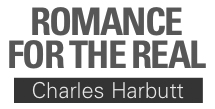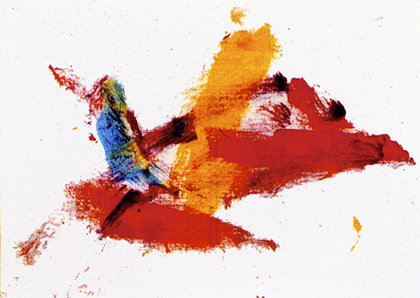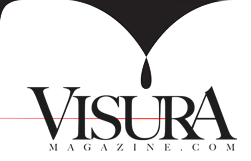
Photography seems like a Cinderella that came late to the Beaux Arts ball, freed things up a bit too much, and then was sent home to more mundane tasks. But, like photography, the Prince (read public) fell in love with her. That is to say: in comparing the story of photography to the story of Cinderella, the equivalent of the Prince who fell in love with Cinderella is the public that fell in love with photography and made it ubiquitous in every home.
People have loved photography from the beginning even when the official position, like Baudelaire’s, was that it was not an art form. “So what,” the public said, “We love it; want some, and want to make some.” And they have. Folktales often mirror the social prejudices that face ordinary people; this one was full of the hatred and abuse of the poor by the rich. Cinderella’s stepsisters had stolen her clothing and forced her to be a scullery maid and sleep in the hearth’s ashes. In the Grimm brother’s version, the punishment of Cinderella’s evil stepsisters was, like Oedipus, to be blinded by the very birds, the very animals that magically had helped the girl do chores as pointless as Samuel Beckett’s shifting pebbles from pocket to pocket.
Like Cinderella, photography from the very beginning has suffered from cultural and class prejudice. For example, from bourgeois writer Charles Baudelaire in 1859: If photography is allowed to supplement art in some of its functions, it will soon have supplanted or corrupted it altogether, thanks to the stupidity of the multitude which is its natural ally. It is time, then, for it to return to its true duty, which is to be the servant of the sciences and arts—but the very humble servant, like printing or shorthand, which have neither created nor supplemented literature.
To understand what was at stake for the Baudelairian world, why this fear of and hostility to what was then only a twenty-year-old medium, I’ve tried to learn why people started to make images at all, how we’ve used that ability and what happened to it over the years. As a democrat, I’m comfortable standing with the multitude, outside the over-cultivated and over-bred products of the hothouse, out with the weeds, the wildflowers and the orchids. As a photographer, I’ve been especially interested in what has been left out or marginalized in art history, which of course is primarily interested in painting and sculpture and written from an elitist consumer’s point of view. I thought there could be something more inclusive.
Throughout the history of art, people have been fascinated with an image made by an actual thing itself. The yearning for and the making of such images continued from the caves until technology finally caught up with it. Photography is a process that evolved over the centuries alongside painting and shared in some of its deepest hopes. However, once invented, it had to free itself from all the barnacles that had been imposed to control image-making.
Part of the reason people started to make pictures seems that as our brains evolved so did our desire to communicate in a broader and more lasting way than the grunt or the gesture, perhaps so as not to have to repeat ourselves. Ultimately, it was to defeat time.
According to Temple Grandin in her book, Animals in Translation, “The human brain is really three different brains, each one built on top of the previous at three different times in evolutionary history…. Each one of those brains has its own kind of intelligence, its own sense of time and space, its own memory, and its own subjectivity.”
The second, the paleomammalian, we share with animals. It is sensual, especially visual, experiential and emotional. It sees and registers everything. Grandin says “Visual thinkers of any species, animal or human, are detail oriented. They see everything and react to everything. We don’t know why this is true, we just know from experience that it is…. Animals perceive way more details than people do.”

The third, the neomammalian, dominates our western civilization and is up in the cerebral cortex. It’s the verbal, rational, scientific, synthesizing, mathematical brain. The other two brains feed their information into this neomammalian brain, into consciousness, where it is sorted, analyzed and categorized. But this brain tends to see what it expects to see, what it wants to see and dismisses; it doesn’t even see, what doesn’t fit. Researchers call this Inattentive Blindness.
Even though the lines are not as strict as logic would have it, I will call the paleomammalian brain, the visual brain and the neomammalian brain, the verbal brain. It is how things lined up over the centuries. The verbal, rational brain tries to control the other two to control its own fate. In that spirit, Baudelaire speaks of allowing photography to develop as an art.
Apparently nature adds as it evolves; it doesn’t subtract, although we have let certain parts of our awareness shrivel and atrophy. So it’s the brain we share with animals, the visual brain with its own intelligence and subjectivity that produced the seers — see-ers – and presumably the image-makers of antiquity.
This idea is clinched by the primates from whom we evolved and who can draw, communicate their feelings with gestures, and it seems make moral judgments. Some empathize with and so comfort the losers in confrontations between dominant males. We can communicate with gorillas by the visual language of signing. A gorilla named Koko made this picture when asked in sign language to draw a bird. Perhaps we have some gorilla genes. There’s a theory that human language began with a combination of sound and gesture like today’s Italian.

This relationship between the verbal and the visual, the verbal brain’s efforts to control the visual brains perceptions and expressions will be a continuing concern in these historical essays about humanity’s romance for the real.
www.actualityinc.com





